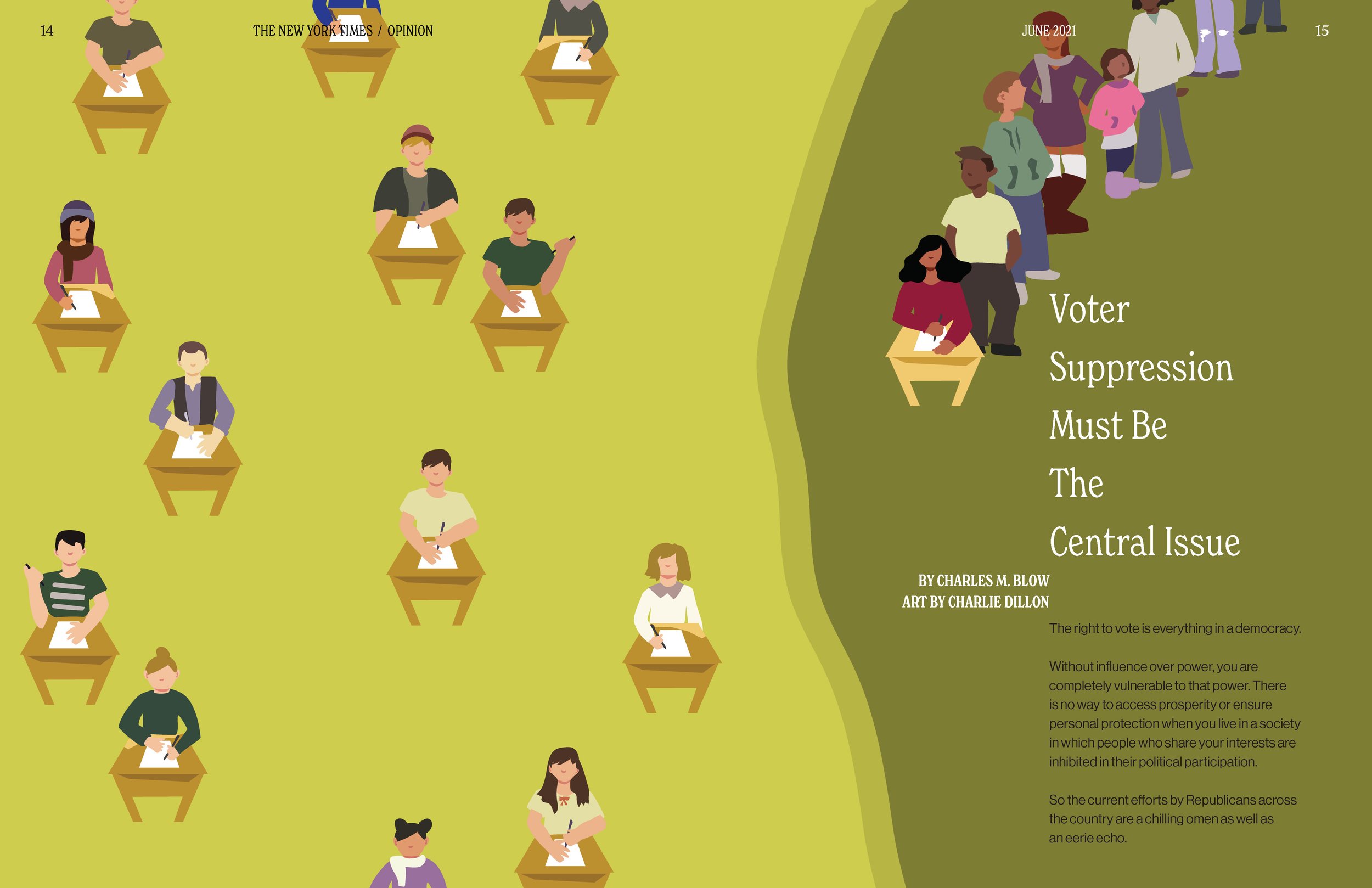
Social Movements During Covid-19
Editorial illustration, layout, & typography
Created for my Honors Thesis at Colorado State Unversity, this series explored different social and political movements happening during the Covid Pandemic. I used articles from the New York Times and NPR as my text, and researched topics on various news sources before selecting these specific topics and articles. This research was important to my process, because I was speaking about people’s pains that were not my own, and I felt I needed to educate myself before I could create illustrations about these topics.
My first piece focused on Asian-American hate crimes during Covid, however I found that focusing on the civic engagement within these communities allowed me to focus on the power of Asian-Americans, rather than just the pain from these ongoing racist incidents. The article I illustrated, written by Daniel Lam, focused on three Asian-American political leaders in their locals. I illustrated Michelle Wu as she was running for mayor of Boston. On the inside spread, I focused on community-building activities that Lam mentions in the article.
In the second piece, I focused on voter suppression laws being passed in the US, and the fight against these. In the New York Times, Charles Blow ties these new laws to the racist poll taxes that used to exist, and draws a line between the country’s history of anti-Black laws to these current bills. I wanted to illustrate this concept of modern poll taxes via voting booths existing in wealthier, white areas, yet wanted to also show the presence of non-white voters in these areas, despite the difficulties to vote. In the inside spread, I focused on other issues related to this, such as purging voter registration lists, as well as the civic impact of inablilty to vote not allowing proper representation from the presidency down to local officials.
In the third spread, I wanted to design a piece for the Texas abortion ban, which at this point was changing from day to day. I selected an article by Ruth Graham for the New York Times that described a women’s clinic and spoke about the people inside, and protestors outside, from present and historical views. It was important to me to not create a political cartoon out of someone else’s pain, so I tried to demonstrate the conversation around abortion by drawing directly from a variety of pictures of protestors and people at pro-choice and pro-life rallies. The second spread focuses on the locations of these abortions, from the lessening of these spaces in recent years, to the protestors outside any clinics that are still open.





